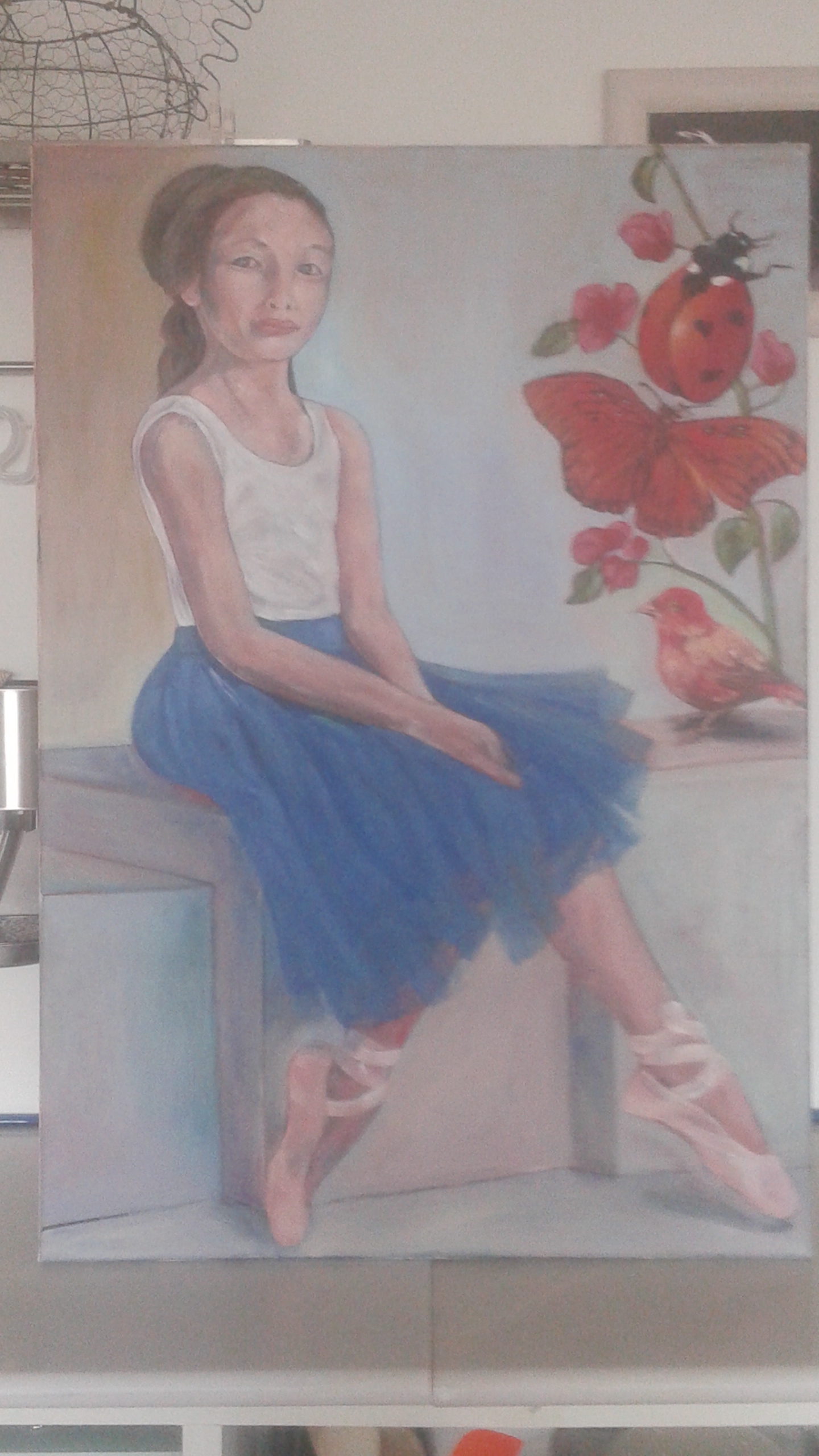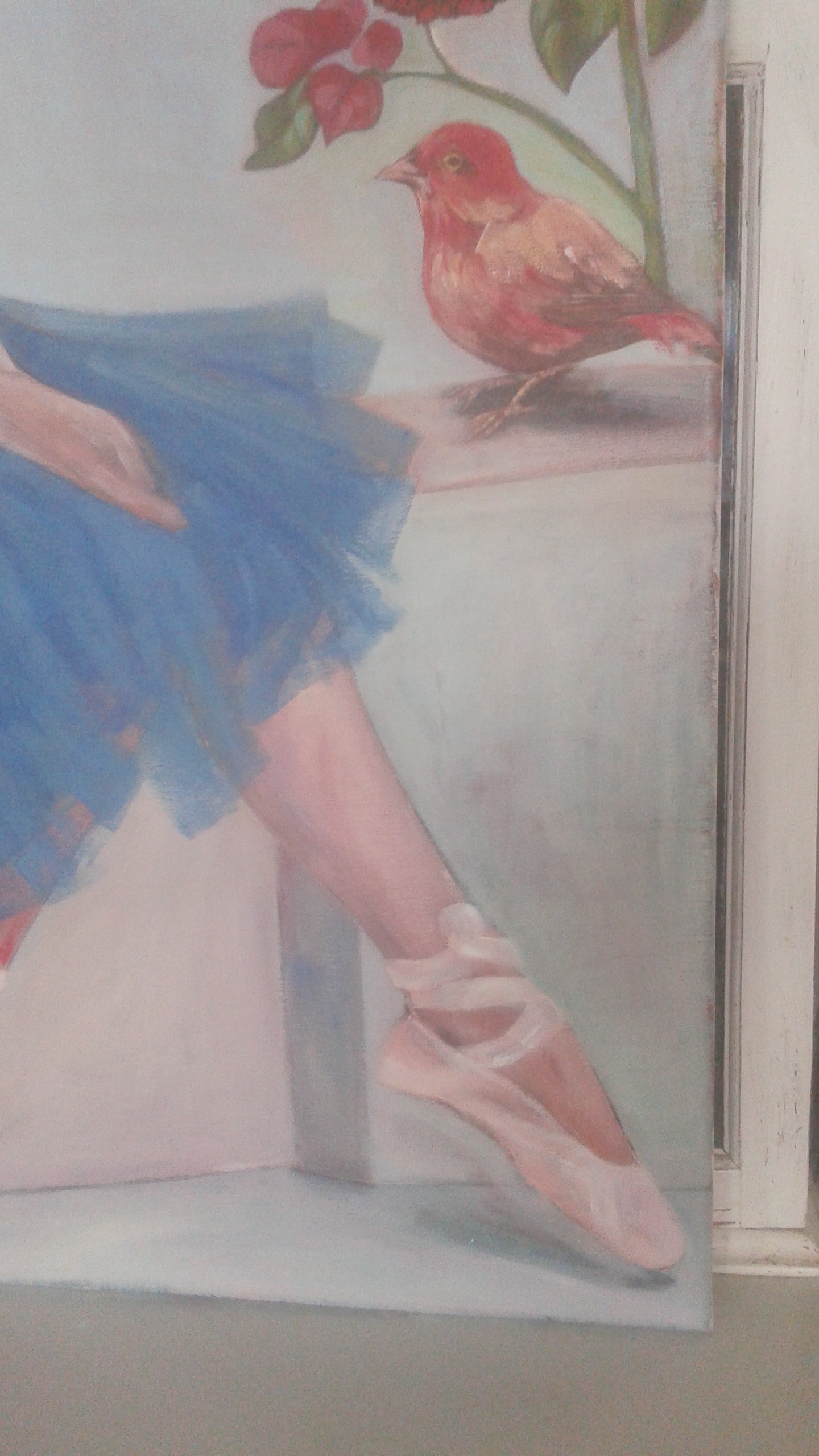
In today’s post I’m including a painting I’ve been working on over the last two months, a few points from the material that resonated with me from the talks in the Collective Trauma Summit .There were many participants from different fields and traditions and so it is natural that some ideas resonated more with my worldview, interests and experience. I’m also including links to this week’s talk by Rick Hanson and Camille Seaman’s website where one can view her beautiful photographs.
a) A few insights from some of the talks that I found interesting and worth reflecting on [some are quotes slightly paraphrased and some are the gist of a longer discussion]:
We rarely see each others’ early wounds, we mostly see their ‘adaptive child’, which are the defenses and ways that were developed in our childhood environments. We need to confront the adaptations and then heal the wound…
The transmission of transgenerational traumas can be stopped only when we turn around and face the fire…. This applies at a personal, familial and collective level.
We could say that globally there is a war of sorts going on everywhere between the forces that support kindness, equity, freedom and human rights and those in favour of control, dominance, and toxic masculinity…..
We need to welcome each person’s uniqueness and we need inward informed humans….
The idea of creating ‘permission fields’ for people to be authentic and real and to be safe to speak their truth…
Contempt for entire groups of people allows us to experience others as expandable….
We need to re-conceptualize and expand the meaning of self [or the word self]….
In contexts of oppression wellness is a form of resistance…
In relation to the effects of trauma and oppression:
There’s a learning or wisdom, which is frozen, mute life in that frozen place…in the ice there are pearls that we or our ancestors have not been able to harvest…
Art allows us to speak the unspeakable…
We need to try to not see trauma as a dead end. When a system breaks down, it can re-order itself at a higher level.
Hopelessness is spread through social media; we need to build resilience through our imagination and creativity, our ability to reframe situations in a generative way, and to envision a better world…
Violence against women across time may be the deepest violence that no one wants to see…
There’s a collective fear in women of being outspoken, visible, expressive…
Trauma results in locked power and potential, which are ours to claim….What are the missing pages, the holes, the broken language….?
Our community extends beyond our own species….. separation from nature is an early trauma most of us have suffered…

b) Something that became salient for me during the talks I engaged with was the need for us to think systemically, to acknowledge the contexts and discern the relationship between events and factors. Therefore, I will make a brief reference to the term “intersectionality”, first coined by legal scholar Kimberly Crenshaw over 20 years ago, to describe how different systems of oppression overlap to create distinct experiences for people depending on the combination of their identities. The concept of intersectionality basically describes the ways in which systems of inequality based on gender, race, ethnicity, disability, class and other forms of discrimination “intersect” to create unique dynamics and effects for people. This means that people have their own unique experiences of discrimination and oppression and we need to consider all the possible factors that can lead to the marginalization of people. For instance, both white women and women of colour experience sexism, but for women of colour this experience is also impacted by racism. Then if we consider economic status and class we see that this adds another flavor to their experience, and so on. Audre Lorde has written that “Some problems we share as women, some we do not. You [white women] fear your children will grow up to join the patriarchy and testify against you, we [women of colour] fear our children will be dragged from a car and shot down in the street, and you will turn your backs upon the reasons they’re dying.” And Kimberly Crenshaw has written that “Feminist efforts to politicize experiences of women and antiracist efforts to politicize experiences of people of color have frequently proceeded as though the issues and experiences they each detail occur on mutually exclusive terrains. Although racism and sexism readily intersect in the lives of real people, they seldom do in feminist and antiracist practices”.
c) Links:
This week’s talk by Rick Hanson about Living in Harmony While Also Taking Care of Yourself at: https://www.rickhanson.net/meditation-talk-living-in-harmony-while-also-taking-care-of-yourself/
The taik focuses on contention, ways to move out of that place and how being present and aware of our responses allows us to notice that we often take the bait that others cast at us and unintentionally follow other people’s scripts of being and relating.
Camille Seaman’s beautiful photographs at: https://www.camilleseaman.com/photographs
